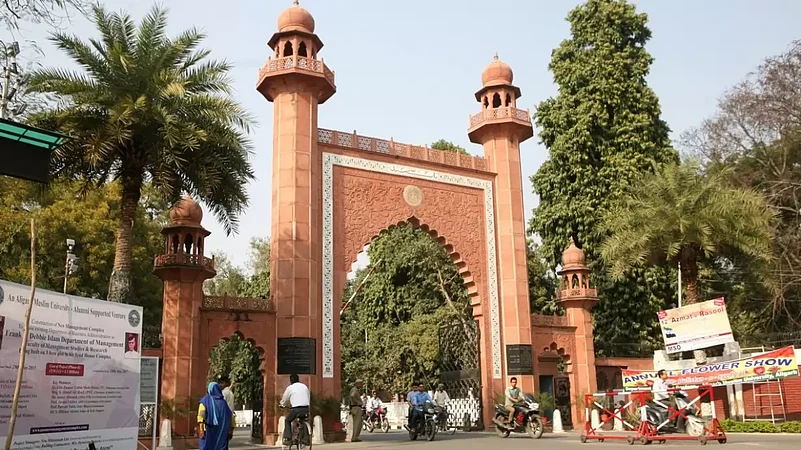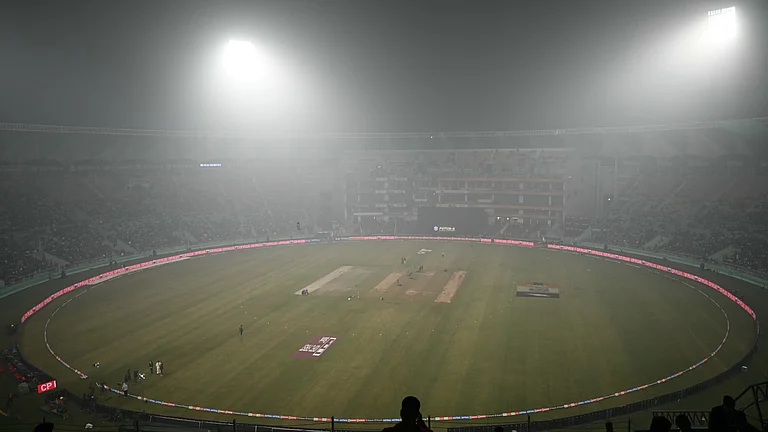The Union government on Tuesday (January 9) reiterated to the Supreme Court that Aligarh Muslim University (AMU) cannot be a minority institution given its “national character”, in fresh hearings of a dispute dating back to 75 years ago.
The questions of law that are being argued in this case are whether an educational institution can be granted minority status under Article 30 of the Indian Constitution, and whether a centrally-funded university established by parliamentary statute can be designated as a minority institution.
Here is a brief timeline of the dispute over AMU
1875: The Aligarh Muslim University was established in 1875 by Sir Syed Ahmad Khan as the Muhammadan Anglo-Oriental (MOA) College. The objective was to provide Western education for the Indian Muslim population, and to establish an education model similar to that of the system in Britain.
1920: The college was then established as the Aligarh Muslim University by the Aligarh Muslim University Act, 1920. However, the enabling Act was passed by the British in control prior to India’s independence.
1951: After Independence, the Indian Parliament introduced amendments to the AMU Act, 1920, to bring the Act in accordance with the new constitution. The Amendment in 1951 amended Section 8 of the Act to open the university “to persons of either sex and of whatever race, creed, caste, or class” and to ensure that the university does not adopt or impose on any person, any test whatsoever of religious belief or profession in order to entitle him to be admitted therein...”
1965: The Amendment in 1965 deleted sub sections 2 and 3 of Section 23 of the AMU Act, 1920 – which meant that the university’s court was no longer the sole governing body. It also did away with Section 9 which provided for compulsory religious instruction to Muslim students.
1967: The AMU filed a petition against the aforementioned amendments in 1967, arguing that Muslims established AMU and, therefore, had the right to manage it. In response to the petition, the Supreme Court held that the university is not a minority educational institution protected under the Indian Constitution.
The court justified its decision by claiming that, while the university was allowed to be established through the 1920 Act, it did not mean that the degrees issued by them would be backed by the government. Hence, the court emphasised, AMU was established through a central Act to ensure the government’s recognition of its degrees. “So while the Act may have been passed as a result of the efforts of the Muslim minority, it does not imply that the University, under the 1920 Act, was established by the Muslim minority,” the SC ruled.
1981: The Supreme Court’s judgement sent ripples across the Muslim community and triggered nationwide protests demanding that minority status of AMU be restored. In response to the criticism, Parliament passed an amendment to the AMU Act that explicitly defined its minority status.
The amendment defined the university as “the educational Institution of their choice established by the Muslims of India, which originated as the Muhammadan Anglo-Oriental College, Aligarh and which was subsequently incorporated as the Aligarh Muslim University.”
2005: The minority status of AMU came into question again when a group of students approached the Allahabad High Court after the university reserved 25 per cent seats in the medical course for internal students, while dividing the remaining 75 per cent equally among Muslims and others.
In delivering the judgement, the court examined the 1981 amendment that officially declared AMU as a minority institution. The high court nullified this amendment, saying that it had the effect of overriding an existing judicial verdict – the one passed in 1967.
2006: At least eight review petitions were filed before the Supreme Court against the Allahabad High Court order, including one by the Union of India and AMU. The Congress-led UPA I was in power at that time.
2016: The NDA government withdrew the petition filed by the Union saying, “as the executive government at the Centre, we can’t be seen as setting up a minority institution in a secular state.”
2019: The top court had on February 12, 2019 referred to a seven-judge bench the contentious issue of the minority status of AMU.
What arguments have been made in the current hearings?
A seven-judge constitution bench of the apex court headed by Chief Justice D Y Chandrachud began hearings on the matter from Tuesday, January 9.
In its written submission filed in the apex court, the Centre has said AMU cannot be a minority institution given its "national character". It has said AMU is not and cannot be a university of any particular religion or religious denomination as any university which has been declared an institution of national importance cannot be a minority institution.
The bench also noted that the 1981 amendments by Parliament to insert a new definition of “university” under the AMU Act could not take away the basis of the 1967 case verdict if it did not make fundamental changes in the act that was interpreted by the court to rule that AMU was neither established nor administered by a Muslim minority community.
The apex court is yet to pronounce its verdict on the matter.


























